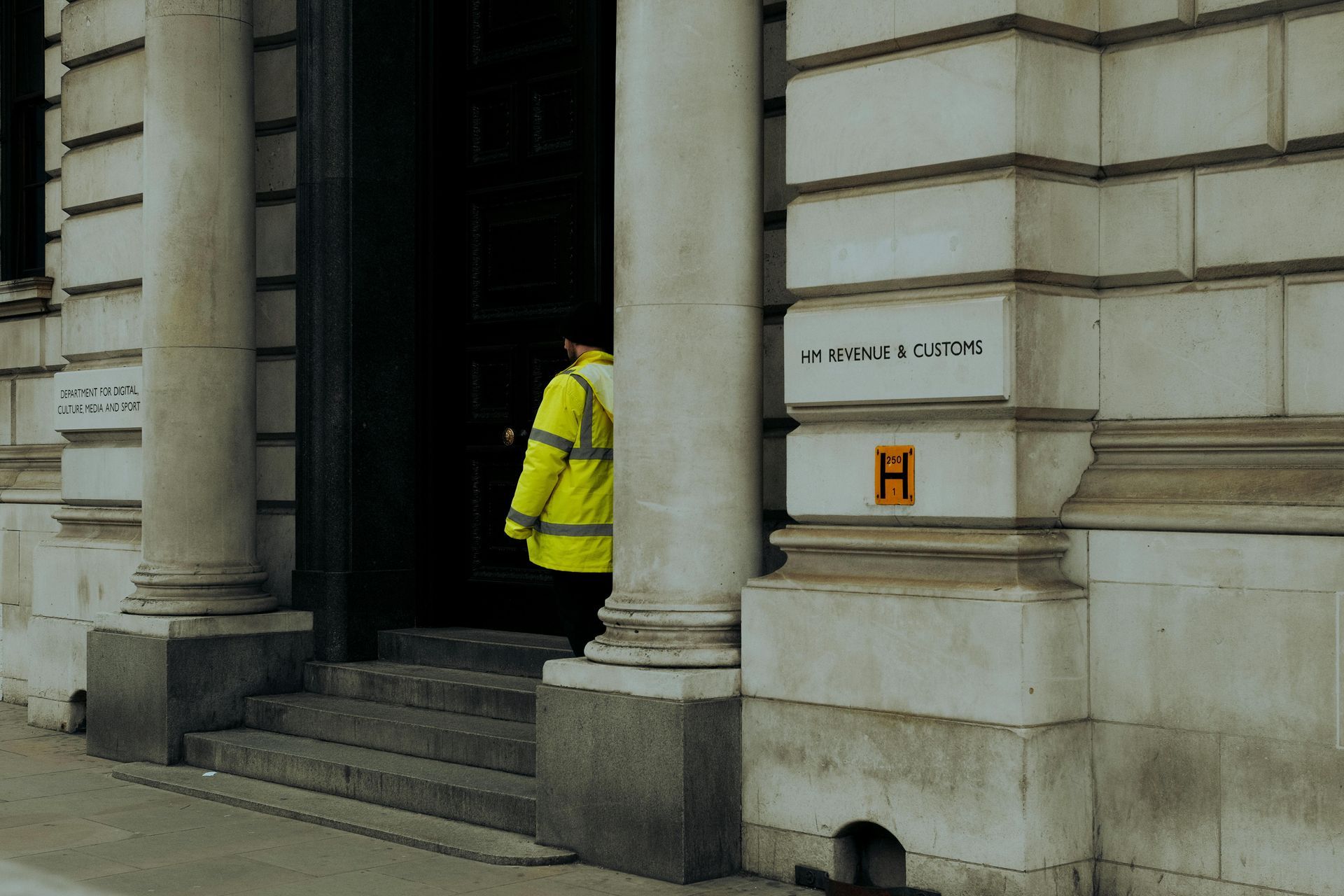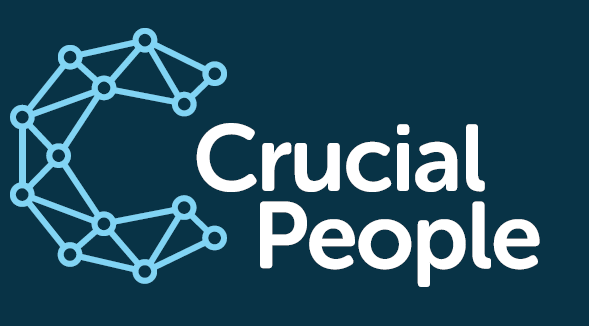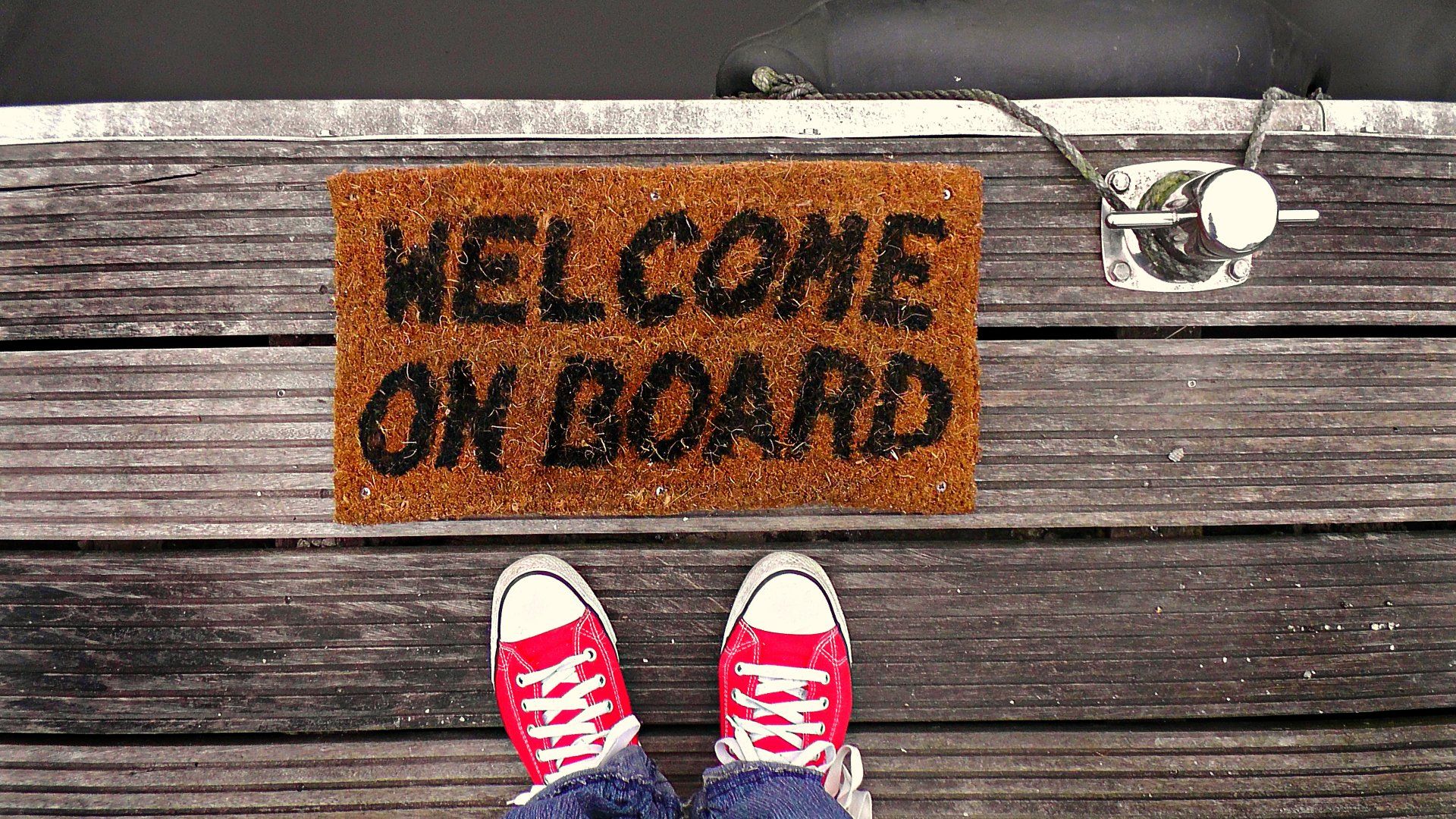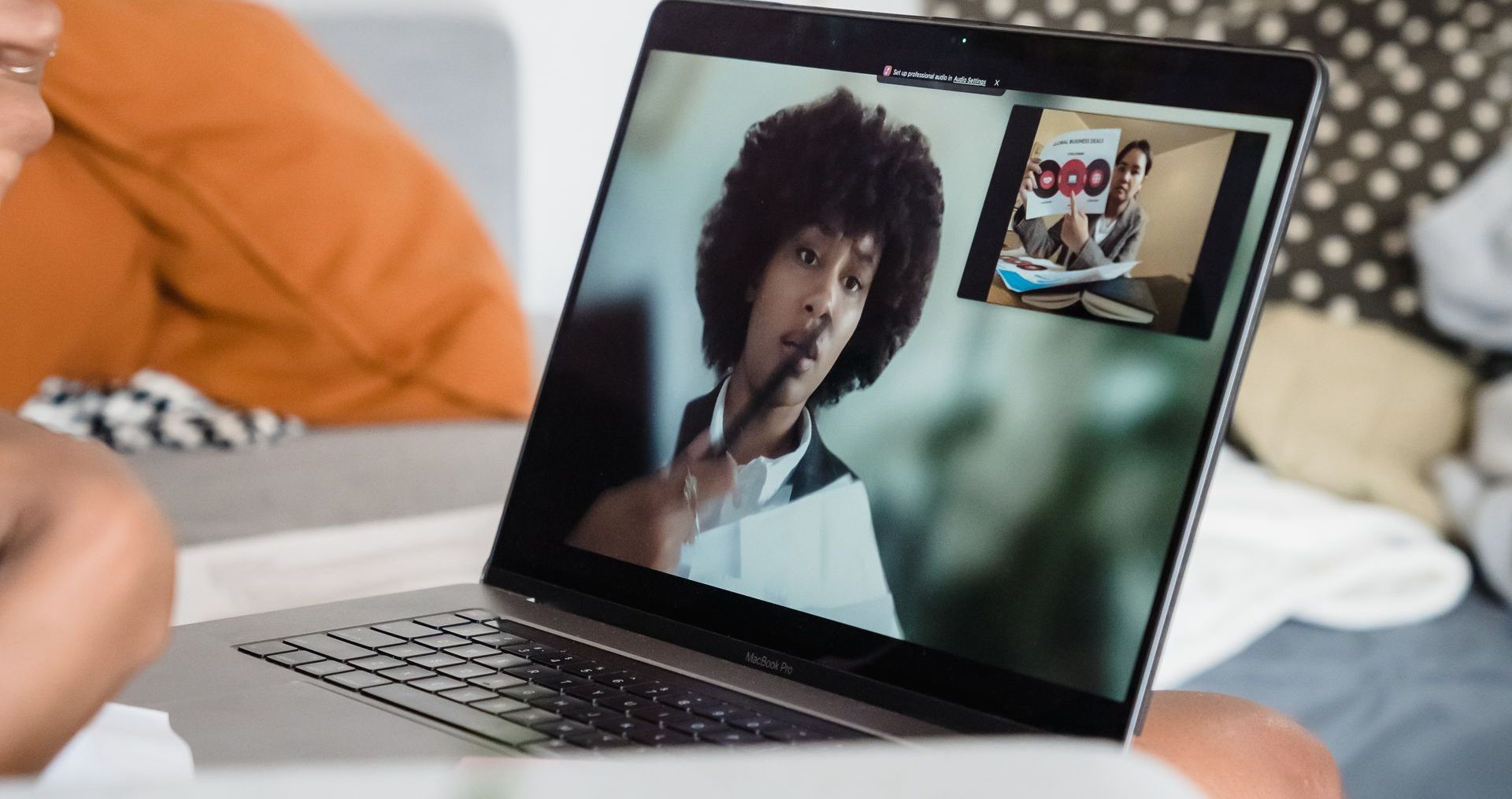Ace your next video interview
Ace your next video interview
Video interviews have become increasingly popular in recent years, and whilst the adoption was greatly driven by the pandemic, they are now a primary choice for many businesses looking to speed up their hiring process and shorten the time it takes for them to get engagement with candidates.

By now, you’re probably familiar with the basics of setting up for a video call: Find a quiet, clean place to have it, check your camera, make sure your mic is turned on etc. But with more and more employers using video interviews, it’s a good idea to take your digital interviewing skills to the next level.
As with in-person interviews, the key to video interviews is to be confident and present yourself as the ideal candidate. But while your goals are the same as in a traditional in-person interview, there are a few differences in how you achieve them, and you want to make sure that your interviewer can focus on your best qualities and not on whether they can hear you.
These tips will help you overcome the specific challenges presented by video interviews so you can put your best foot forward.
1. Prepare As You Would for an In-Person Interview
Just because your interview is happening over a video platform, it doesn’t mean it’s not a real interview. When preparing for a video interview, you should treat it just like an in-person interview. This includes researching the company and role, practising common interview questions, and preparing questions to ask the interviewer. Your interviewer is looking for a candidate who they can see themselves working with and who is knowledgeable and passionate about the role. Be sure to showcase these qualities and be prepared to demonstrate why you are the ideal candidate.
2. Dress to Impress
When you get dressed for a video interview, you want to be just as formal as you would be for an in-person interview at the same company. The urge to be less formal because you’re in your own home is understandable, but it might send the wrong message about how interested you are in the role.
You also want to make sure your outfit looks good on camera. Try it on in front of the same platform you’ll be using for the interview. For example, a slightly lower-cut top that might be completely appropriate in person could look weird if your entire shirt is outside of the video frame.
3. Test Your Technology (then re-test it)
To reduce technical issues during the interview, it's important to test your setup beforehand. Use the same platform, internet connection, and hardware that you will use for the interview, and have a friend video chat with you to ensure everything is working properly. Familiarize yourself with the program and make sure you understand the basic features, such as muting and unmuting the microphone. By preparing in advance, you can minimize technical difficulties and focus on the interview itself.
4. Set Up Your Shot
During a video interview, you are responsible for the physical setting. Choose a quiet location with a neutral background, such as a blank wall or a clutter-free room. Make sure you have good lighting, with the light source behind your device. If you need to use a phone, prop it up instead of holding it. If you have trouble finding a space with good natural lighting in your home, consider using a ring light to improve the lighting around the camera.
5. Don’t Sit Too Far or Too Close
Just like you wouldn’t sit three inches or eight feet from your interviewer in a conference room, you don’t want to sit an uncomfortable distance from your computer. When you’re setting up your chair, you’ll want to make sure you don’t end up looking too tiny or too huge. To be well proportioned, make sure there’s a bit of empty space on the screen above your head and check that your shoulders and upper chest are visible.
6. Prep for Optimal Eye Contact
To create a sense of connection during a video interview, it's important to maintain good eye contact with the interviewer. Position yourself at a comfortable distance that allows you to look directly at the camera. Place the window with the interviewer's image on the same monitor as the camera, and centre it as close to the camera as possible. This way, when you look at the interviewer, you will also be looking directly at the camera, creating the appearance of eye contact.
7. Check for Glare
Before the interview, check for any distracting reflections or glares in your shot. Common sources of glare include watches, jewellery, and glasses. If possible, remove any accessories that may cause glare. If you cannot remove your glasses, try the following tips to minimize glare: move the lamp or point it at a wall behind the computer, adjust the lampshade or remove it, adjust your position and computer angle, and adjust the height of your laptop screen or phone. It is helpful to do this at the same time of day as the interview, especially if you are using natural light.
8. Practice Your Video Interview Skills Ahead of Time
If you're not used to video chat, it may feel awkward to have a conversation through a screen. To get more comfortable, try practising a mock video interview with a friend or partner. This can help you identify any habits or distractions that you need to watch out for, such as looking away from the camera or making hand gestures that are too low to be seen. Make sure to maintain eye contact and avoid fiddling with papers during the interview. It's also important to practice answering questions in the same way you would in a real interview, especially when discussing key aspects of your background. This will help you feel more confident and avoid stumbling over your words.
9. Pay Attention to How You Sound, Too
It's important to not only consider your appearance in a video interview but also your vocal presentation. Speak clearly and naturally, with a reasonable pace and appropriate tone and pitch to convey your emotions and enthusiasm. Keep in mind that there is less body language communication in a video interview, so the way you speak becomes even more important in conveying your thoughts and feelings. Be sure to pay attention to your speaking habits, such as how fast you speak and how you pause, to make a positive impression on the interviewer.
10. Prepare some notes, but try not to use them!
Even though your interviewer won’t be able to see everything you have on your desk (or on your screen), it might be tempting to have a lot of information in front of you for a video interview. But be careful. If you have set your camera up properly, it will be obvious you are looking away. Also, you need to look and sound natural, not like you’re just reading pre-prepared answers. A huge reason someone decides to hire you is that they feel like you made a connection during the interview, which can be hard to do if you’re distracted.
11. Minimize Interruptions—But Take Them in Stride If They Happen
To minimize interruptions during the interview, set up in a room where you can close the door and let anyone you share the space with know not to disturb you. Turn off or silence your phone and any other electronic devices that may make noise, and pause any notifications on your computer. If there is a possibility of being interrupted by something beyond your control, such as a barking dog, inform the interviewer at the beginning of the interview. This will prepare them and show that you are proactive, as well as help you feel more at ease about the situation.
12. “Show Up” a Few Minutes Early
To be prepared for a video interview, be sure to arrive on time by having your computer ready with all extra windows and tabs closed. If you have materials to present, such as a portfolio, make sure they are easily accessible but minimized. Open the program for the video interview a few minutes early and check your shot before the interview starts. Joining the meeting a few minutes early will show punctuality and allow you to relax before the interview begins. When the interviewer starts the meeting, you will already be ready to go.
13. Start Off With a “Digital Handshake”
When you interview in person, there’s a period where the interview has started, but it hasn’t started. You and your interviewer are physically meeting, shaking hands, walking into the room, and sitting down. Even if you’re not making small talk, there’s still some time to settle in. For a video interview, this isn’t always the case, so you need to focus on making an initial connection even more than usual - eye contact and a smile go a long way.
14. Acknowledge the Differences
It’s OK to mention in the moment that a video interview isn’t the same as an in-person interview. Acknowledging things are different helps put people at ease and mimics those introductory moments, and don’t be afraid to say if something feels off—if you can’t hear or see your interviewer well, for example. It’ll just demonstrate that you’re willing to speak up and be straightforward about issues.
15. Maintain Good Posture
Because you’re at home, it’s natural to be a little more relaxed. Try not to let this translate into you slumping down in your seat. It makes you look less engaged. Sitting up straight also naturally gives you a bit more energy and helps you communicate your excitement about the job.
16. Use Your Face to Show You’re Engaged
In a video interview, nonverbal communication such as eye contact and body language is limited, so it's important to rely on facial expressions to convey meaning. Be aware that short verbalizations like "yes" or "mm-hm" can interrupt the flow of conversation on video platforms where only one microphone can be used at a time. Instead, use nods or smiles to show agreement or understanding without muting the other person's microphone. This will help maintain the flow of conversation and ensure that you don't miss any important information.
17. Let the Other Person Finish Speaking
This is good life advice in general, but as above, over video calls, jumping in with your response too soon can mute the other person’s mic and cut them off entirely at the risk of making you seem rude even if you didn’t intend to be. Plus with internet lag, it’s not always immediately apparent whether someone is done speaking or just pausing. So once you think your interviewer is done, pause before you answer. If you have trouble with this, get in the habit of muting yourself while the other person is speaking and that way, the action of turning the mic back on forces you to give them a little extra time to keep talking.
18. Signal When Your Answers Are Complete
In the same vein, it’s helpful for the other person if you signal the end of your answer, especially if it’s a long one. You can do this through a visual cue like nodding or you can make sure you conclude your answer strongly or ask the interviewer a question. A long silence while your interviewer guesses whether or not you’re done can be awkward over video, whereas in person, it’s usually clearer that the other person is finished speaking.
19. Explain Any Long Pauses
Because of the various limitations of video calls, it might not always be clear to your interviewer what you’re doing if no one is speaking. Tell them if you’re pausing to write down a few notes, pull up some
information for them, or even just formulate your answer to a question. This shows that you’re aware of their experience while also reassuring them that no technical glitches have occurred.
20. Treat Your Video Interview Like a Conversation
To make a connection during a video interview, it's important to treat it like a conversation and build rapport. Be personable and professional, and make sure the conversation flows smoothly. Don't just answer questions; feel free to comment on the interviewer's responses and ask your own questions throughout the conversation. If you need to make a note and come back to a topic later, it's okay to do so. The goal is to have a natural conversation that helps the interviewer get to know you better.
You want your interviewer to see you as someone they could talk to every day, not just someone they read a list of questions to.
If you are reading this then hopefully you are preparing for an interview yourself, so we wish you the very best of luck.
If you would like to discuss this in more detail or get some additional help with your interview prep then get in touch with us at info@crucial-people.com or by phone at 0203 154 9423 and we would be happy to help.











